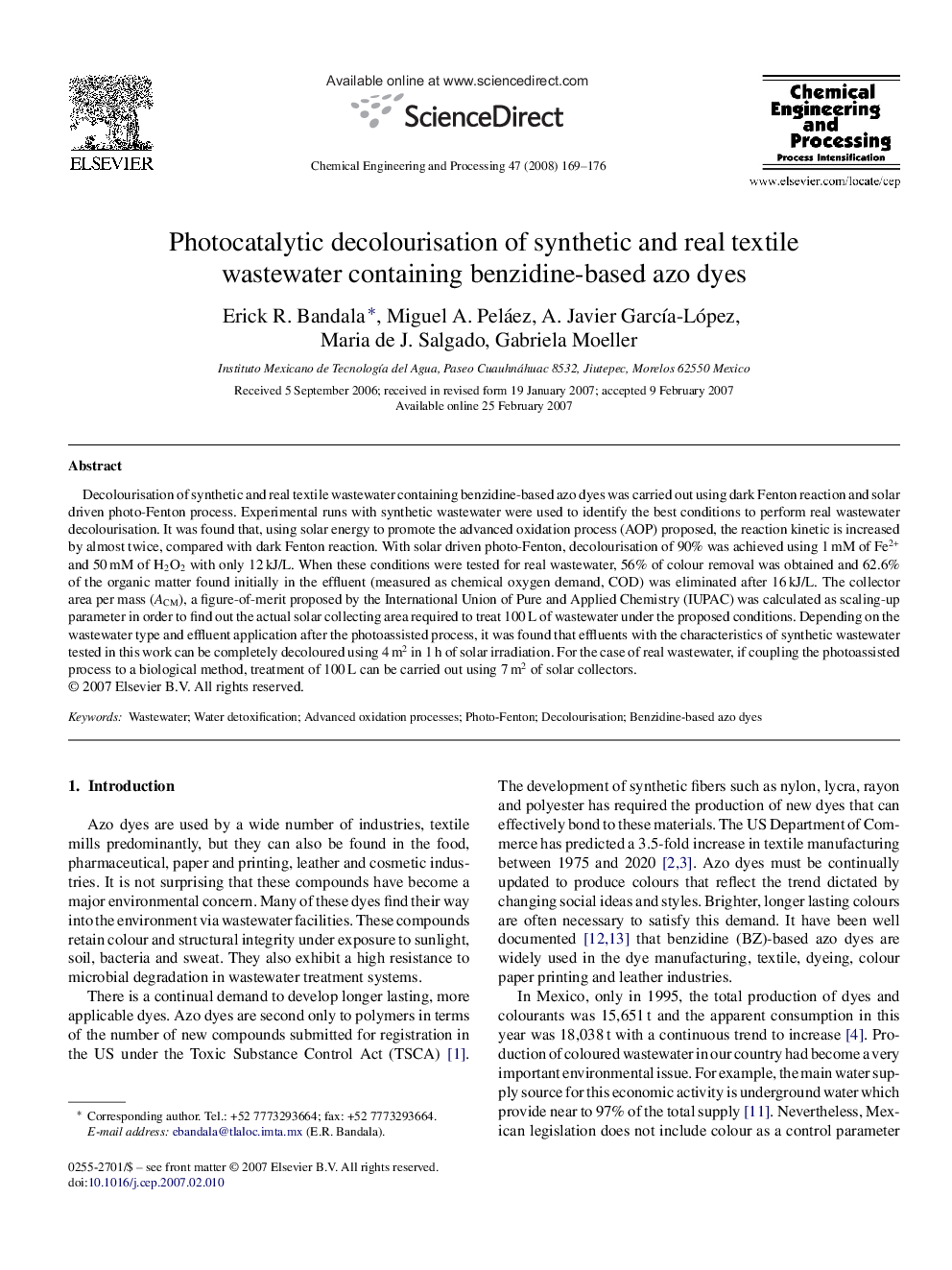| Article ID | Journal | Published Year | Pages | File Type |
|---|---|---|---|---|
| 688159 | Chemical Engineering and Processing: Process Intensification | 2008 | 8 Pages |
Decolourisation of synthetic and real textile wastewater containing benzidine-based azo dyes was carried out using dark Fenton reaction and solar driven photo-Fenton process. Experimental runs with synthetic wastewater were used to identify the best conditions to perform real wastewater decolourisation. It was found that, using solar energy to promote the advanced oxidation process (AOP) proposed, the reaction kinetic is increased by almost twice, compared with dark Fenton reaction. With solar driven photo-Fenton, decolourisation of 90% was achieved using 1 mM of Fe2+ and 50 mM of H2O2 with only 12 kJ/L. When these conditions were tested for real wastewater, 56% of colour removal was obtained and 62.6% of the organic matter found initially in the effluent (measured as chemical oxygen demand, COD) was eliminated after 16 kJ/L. The collector area per mass (ACM), a figure-of-merit proposed by the International Union of Pure and Applied Chemistry (IUPAC) was calculated as scaling-up parameter in order to find out the actual solar collecting area required to treat 100 L of wastewater under the proposed conditions. Depending on the wastewater type and effluent application after the photoassisted process, it was found that effluents with the characteristics of synthetic wastewater tested in this work can be completely decoloured using 4 m2 in 1 h of solar irradiation. For the case of real wastewater, if coupling the photoassisted process to a biological method, treatment of 100 L can be carried out using 7 m2 of solar collectors.
